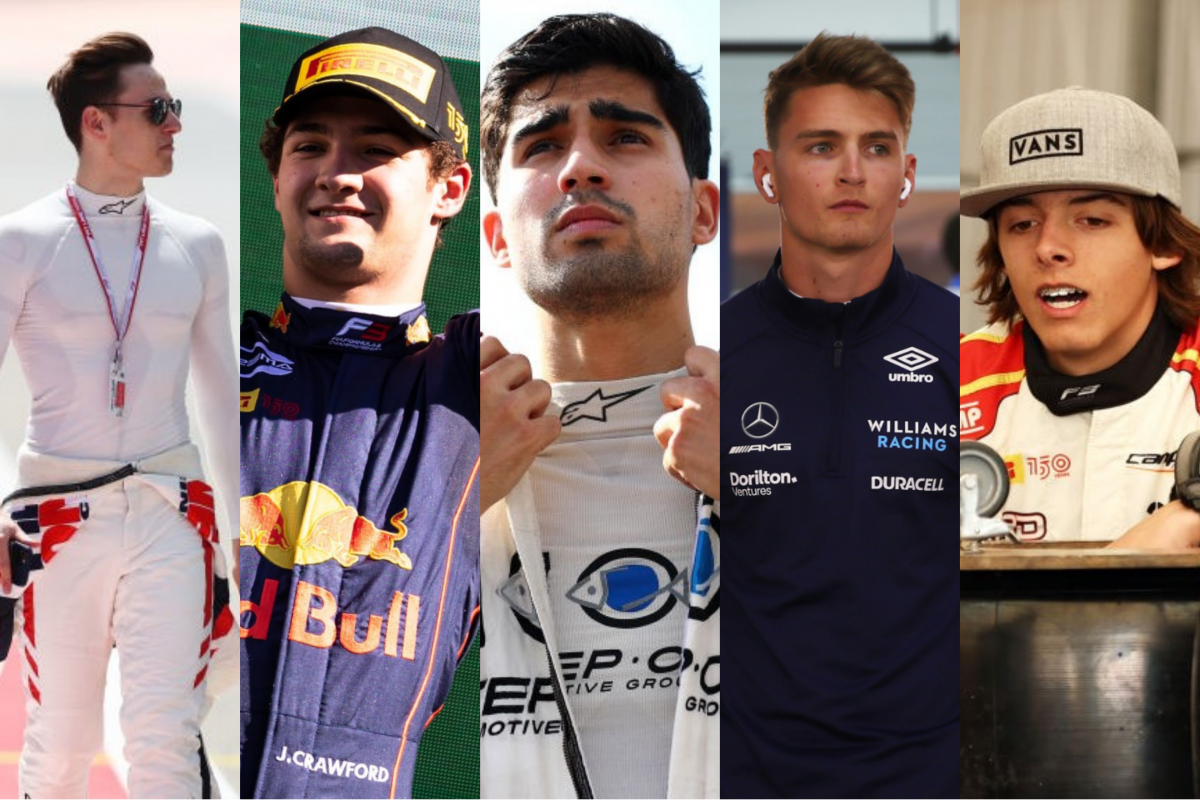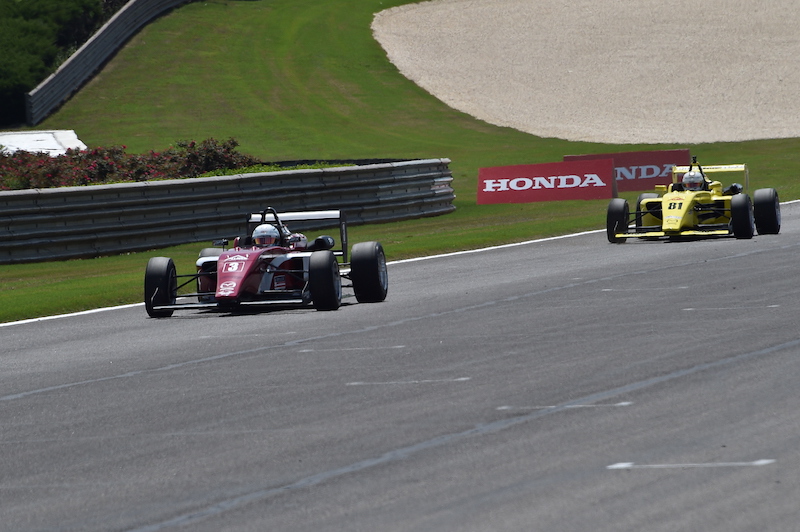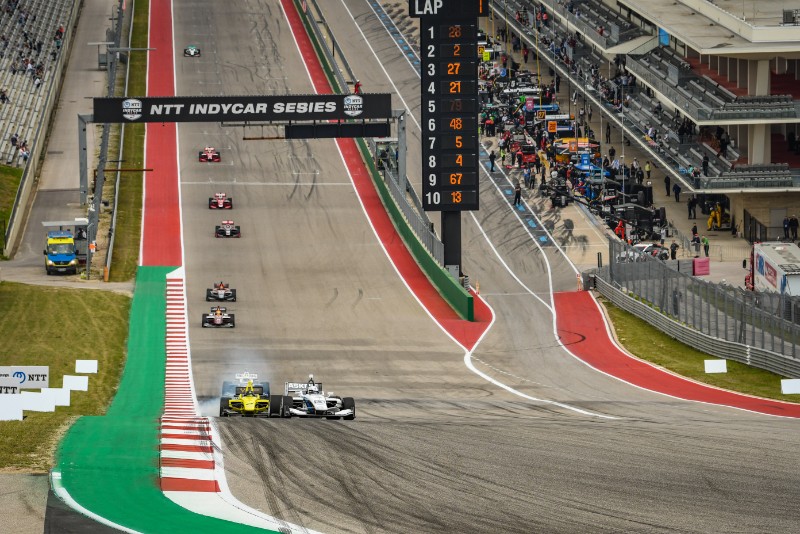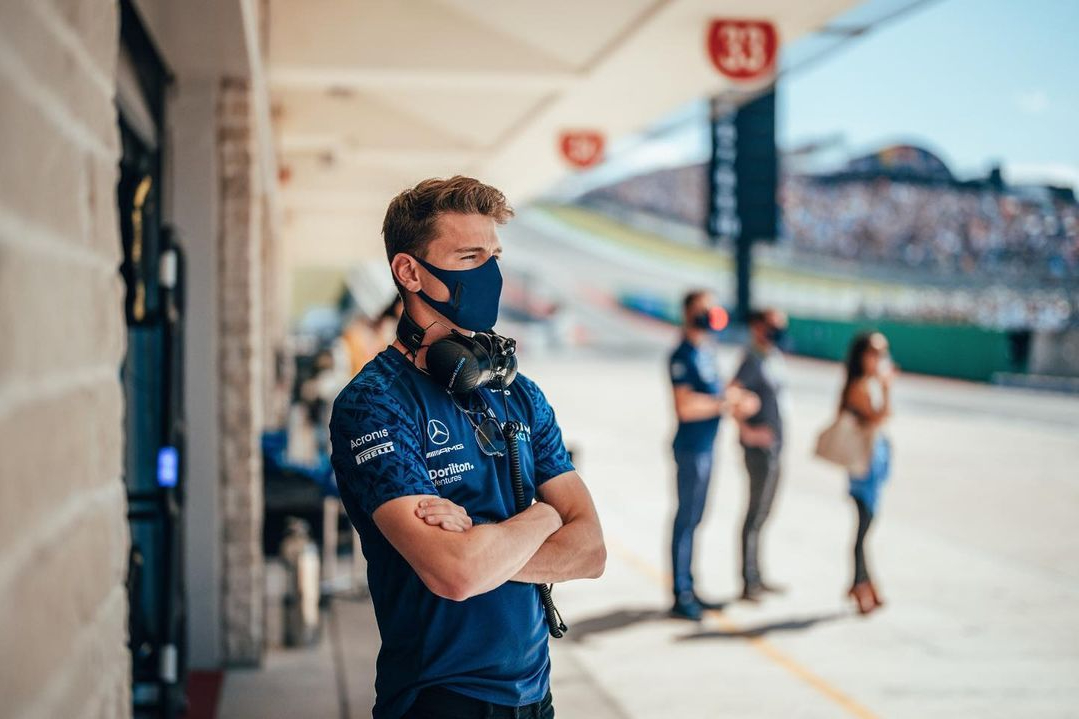
Photos: Formula Motorsport Limited
It is no secret that Formula 1 is willing to have an American driver in the grid, but will having three different grand prix venues in the United States in 2023 boost that aspiration?
Formula Scout spoke to five drivers from the USA competing in Formula 2 and the FIA Formula 3 Championship on the Formula 1 support bill about how complicated it is for American drivers to get to F1 and about what it could mean having three F1 events in their country. Despite recognising that it might help, they don’t feel like it will have a straightforward impact on bringing themselves or their compatriots into F1.
Reaching F1 is an extremely difficult task, which becomes almost impossible if you don’t go through FIA F3 and F2 first. Pietro Fittipaldi, himself a driver who occassionally races as an American as he holds dual nationality, was the last to do it when he was a stand-in driver in 2020 and he had experience of IndyCar, Super Formula and the DTM.
Brendon Hartley did six rounds in F2’s predecessor series GP2 before becoming a two-time Le Mans 24 Hours winner and World Endurance champion and then eventually earning his F1 debut late in 2017, doing well enough to earn a full-time 2018 seat. The New Zealander debuted with Toro Rosso, and after a full season with the team where he was outperformed by team-mate Pierre Gasly, he was dropped.
The last driver with no GP2/F2 experience at all to appear full-time in F1 without having to do some stand-in performances first was Lance Stroll, who was signed by Williams for the 2017 season when he was the reigning FIA European F3 champion.
Trying to avoid situations like Hartley’s is what pushed Logan Sargeant, Juan Manuel Correa, Jak Crawford, Kaylen Frederick and Hunter Yeany to move to Europe very early in their careers. According to them all, coming to Europe gives drivers the best chance to have a shot at F1, and that is exactly what they are trying to get.
“I think the best path to get there [F1] is obviously to come over here because the Road to Indy championship is mainly targeted for IndyCar,” Frederick said to Formula Scout.

Frederick in USF2000
“From a development point-of-view from my side, it’s more competitive over here [Europe]. There are stronger championships in my opinion, so we thought we would come over to get some better learning and development. I think Europe realistically is the best place for drivers to grow, and it’s the only path you can really take at the moment to get to F1.”
After moving to Europe, Frederick won the BRDC British F3 title with Carlin in 2020, then stepped up to FIA F3 with the team. He now races in the series with Hitech GP.
Current Carlin F2 driver Logan Sargent, a race-winner in Formula 4, Formula Renault 2.0 and F3, shares Frederick’s thoughts.
“I knew that to get to F1 the only real opportunity was to race here and move to Europe. It’s where the competition was at its highest, so I needed to make that step, moving away from America. I felt like I wasn’t being quite as challenged as I needed to really progress as a driver. That’s really the two main reasons but the main one being to reach F1.”
Chasing the F1 dream requires many sacrifices, especially for the drivers who have to leave their home at a very young age. Sargeant, who has been competing in Europe since he was racing mini karts, admits he hasn’t gotten over homesickness yet and doubts he ever will do.
“It definitely wasn’t easy. Still isn’t easy, I don’t think it ever gets easy. You leave everything behind, your friends, family behind and just sort of restart. So in a way, it’s never going to be the same, never going to be easy, but it’s part of it for us. Americans and even Australians are from far away. It’s just part of the sport for us.”
Jak Crawford stayed in North America to start his car racing career, making use of more lenient entry requirements to be winning races in the Mexico-based NACAM F4 aged 13 while most opponents didn’t start in cars until they turned 16.
He then raced in USF2000 before moving to Europe with the backing of Red Bull to race in ADAC and Italian F4 two years ago.

Photo: ACI Sport
“Obviously, moving away from your family [is tough]. It was a 10-hour flight over to Western Europe, so quite far,” said the Prema F3 driver. “It was really difficult. I had to give up a lot of things, school and friends at home and leave my family quite early. It was a big sacrifice for sure.”
Campos Racing’s F3 driver Hunter Yeany showed himself to be a bit more optimistic about this aspect.
“You really miss them [the family] and sometimes you get a bit homesick when you are here because some things are different, and the others really miss you at home sometimes, so I really like going home,” he said. “But once you get over the homesickness and you get used to it, it’s really nice and you learn a lot.”
Yeany was actually travelling to Europe back when he was karting in America and racing in US F4, as he was conducting single-seater tests with British teams to prepare for a roadmap he already had to make it to F1 the European way.
Having to make such big sacrifices for having a long shot at F1 results in most young American racers joining the Road to Indy instead. The Road to Indy now consists of three series —Indy Pro 2000, USF2000 and the F4-spec USF Juniors — and drivers there usually target IndyCar. These championships offer scholarships to champions so they can progress up the ladder, which make competing in these series much more appealing than an uncertain trip to Europe. Frederick, who did two seasons in USF2000, explained the situation and why he still decided to move over.
“In this day and age, you have to be quite young in F3 and F4 championships. So, a lot of the kids will still be in school in the USA. They can’t possibly come to Europe and go back in F4 and F3 series and manage that with school and everything.
“So, obviously they choose a US championship, which is why I graduated early from the USA, so I could move over to England. But yeah, I think it’s definitely not ideal for an American to be making into F1.

Circuit of the Americas being used by Indy Lights in 2019
“All the tracks over here, obviously the same F1 tracks that you’ll be going to, the only one in the USA you’d be on is Circuit of the Americas. From a learning standpoint, everything’s a lot more available over here to, you know, European drivers.”
Therefore, once drivers go through the ranks of Road to Indy and the very different tracks used in America including ovals, it makes it difficult for them to take another direction in their careers.
“I think it’s really difficult to go from Road to Indy into F1. I think, first of all, you are not learning the tracks, you are not learning the tyres, the racing standards in Europe.
“I mean, the drivers in the Road to Indy are talented, but it would be difficult to make that transition because you would have much less experience. I think you learn so much for F1 being just in Europe and racing against other people on these tracks and stuff like that,” Crawford said when Formula Scout asked if it was possible to go from America straight into F1.
Juan Manuel Correa didn’t want to take merit away from IndyCar drivers when speaking about the chances of one of them making the big jump, as he is eyeing a future in the series, but admitted that drivers raised in Europe are probably better prepared for F1.
“I know the top drivers in IndyCar are probably just as good as the top drivers in F1, to be honest with you, but we have grown in a way here in Europe. We have built ourselves as drivers here in Europe.
“We’ve been training for F1 our whole lives whereas I think IndyCar maybe has a little bit of a different personality and I don’t know, it’s difficult for me to say but if I would be a team principal, I would probably choose a top F2 driver over a top IndyCar driver to go into F1,” said the Sauber junior.
Later this week the Miami Grand Prix makes its first appearance on the F1 calendar, and in 2023 a 41-year absence for Las Vegas will be ended, making it three F1 races on US soil in a season. Initially, it could be thought that this would increase the options of landing an F1 seat for American drivers. However, those on the ladder to F1 don’t expect it to happen immediately.

Photo: Williams Racing
“The sport’s constantly growing, we now have three confirmed grands prix in America, going between Vegas, Miami and Austin and it’s performance-based sport so if we perform well, I think our opportunity will come,” Sargeant said about future opportunities for Americans.
“I think it will help definitely with the fanbase and interest in F1 and maybe get some Americans thinking that ‘oh yeah I do want to go race in F1’, but I don’t think those races will necessarily help anybody to develop more for F1 or to develop any sort of skills that you need for it. I think you still need to come over to Europe for that,” Frederick affirmed.
However, Frederick’s words mentioning a growing interest for F1 in the United States give room for hope. A bigger audience could indeed mean that more American sponsors become interested in investing in young American racers. This would bring greater opportunities for those who have already chosen to sacrifice their lives and move to Europe to pursue their F1 dream. Having strong support from your country is definitely an important step towards making it to the top of the ladder nowadays, and it becomes even more important when you have to go overseas to chase the dream.
Only time will tell whether either Correa, Crawford, Frederick, Sargeant or Yeany become the next and so desired for American to drive in F1 or whether it is someone else. Notwithstanding, F1 gaining presence in the USA is already a stepping stone to seeing the first American driver competing in the pinnacle of motorsport since Alexander Rossi briefly did back in 2015.
Americans’ path to F1
| Driver | Pre-F1 | F1 career | Post-F1 |
|---|---|---|---|
| Alexander Rossi | GP2 runner-up, 3rd in FR3.5 | 5 races in 2015 | 7 IndyCar wins |
| Scott Speed | 3rd in GP2, FR Eurocup champion | 28 races in 2006-’07 | NASCAR, FE, 4 US RX titles |
| Michael Andretti | 27 wins and a title in CART | 13 races in 1993 | 15 CART wins |
| Danny Sullivan | 1 CART podium, 3rd in Can-Am | 15 races in 1983 | 17 wins and a title in CART |
| Eddie Cheever | Euro F2 runner-up | 132 races in 1978, 1980-’89 | 5 IndyCar wins |
| Bobby Rahal | Atlantics runner-up, 15th in Euro F3 | 2 races in 1978 | 24 wins and 3 titles in CART |
| Danny Ongais | 1 CART win | 4 races in 1977-’78 | 5 CART wins |
| Brett Lunger | 3rd in SCCA F5000, 24th in Euro F2 | 34 races in 1975-’78 | IMSA |
More on Americans and F1
The F1 juniors choosing British F4 as their first car racing step
Opinion: Is F1’s new FP1 rule an adequate solution for young drivers?
Podcast: How IndyCar’s 2022 rookie crop will fare feat. Jack Benyon
How a surprise phone call led to Indy Lights’ most exciting rookie yet